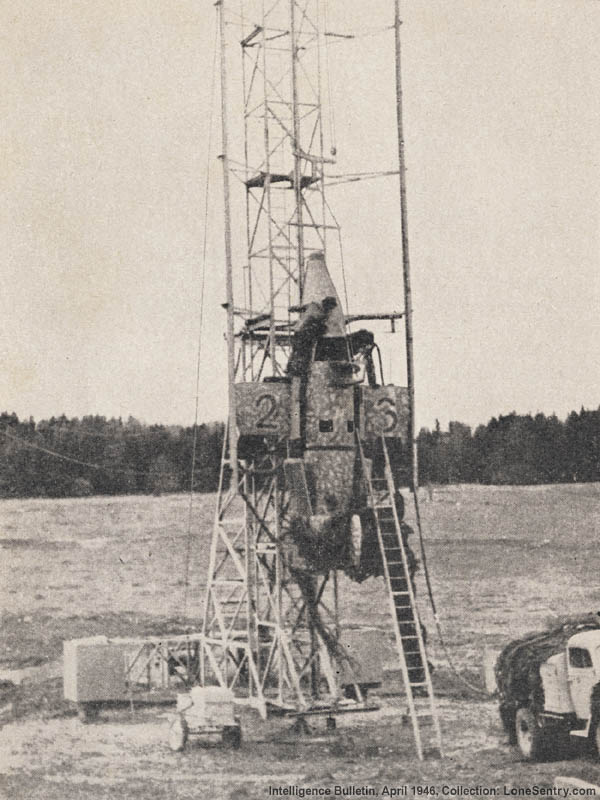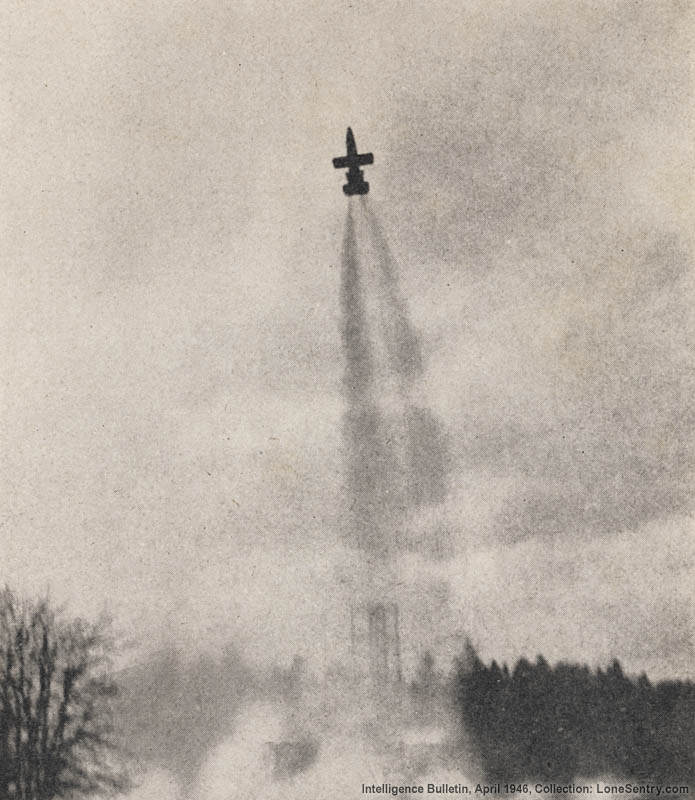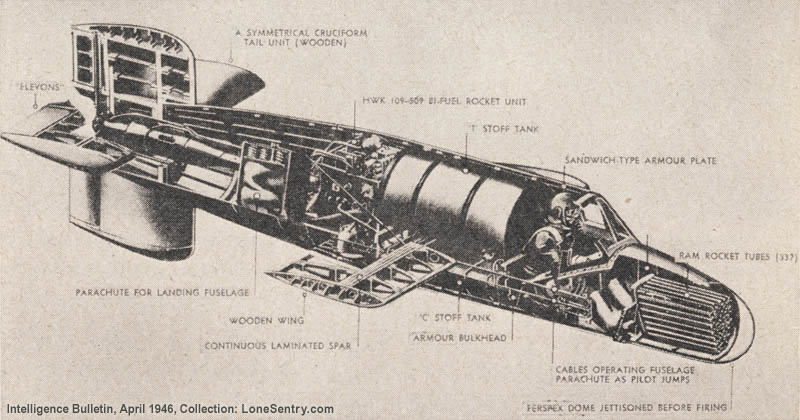As we have some of the more fanciful aircraft of the Luftwaffe in the game already I thought I would submit this for the review of the modding community. The epitome of a last ditch effort to stop USAAF bombers over the Reich, the Natter combined simplicity of construction, extremely heavy firepower, and sheer performance (albeit short lived) that makes the ME163 look like an I16.
Whats more is this aircraft could (in theory) be launched from mobile platforms, meaning that it wasn't dependent on fixed airfields, favorite targets of the allies.
Some more pictures and background. What technical specifics I could find are in at the bottom.
I wonder if it would be possible to franked plane one of these from the ME163? Although you would lose alot of the Natter's amazing performance.


An Illustration of the recovery system of the plane/pilot. Photo is of a successful test of this system using a dummy.



Gray/Green mottling

Natter in the Garber facility, shows overall basic green mottling.

This aircraft was a manned, rocket-propelled single-flight projectile which could be flown by a pilot with only limited training in how to aim it at the enemy. It was to be launched vertically from a gantry and fire its nose-mounted load of 34 3-inch rockets into a bomber stream in a single salvo lasting 0.4 seconds. The pilot would then bale out, as the aircraft was simple, cheap and disposable (the aircraft did have a recovery parachute that would allow the vital parts of the aircraft to be recovered and reused). However, it was calculated that the average acceleration during the climb would be 2.2g, the highest projected altitude 52,000 feet, the average climb speed 420 mph and the horizontal speed while accelerating away from the fighter escort would be 620 mph! Exactly how the pilot was going to abandon the aircraft safely when his 7 minute fuel supply ran out was left to him!
A volunteer was eventually found (for a test flight) and strapped in, but shortly after lift-off the plexiglass canopy blew off and at the speeds reached by the rocket it is likely that the pilot lost consciousness almost immediately. The engine of the 'Natter' ran all the way to the ceiling altitude, then the aircraft went into a steep dive and disappeared, crashing into the Danube valley (it was suspected that the aircraft had actually gone supersonic during its death-dive).
At least one Foo-fighter sighting appears to have been of a Bachem Ba349 'Natter' - The case in which in which pilot Lt. David L. McFalls and his radar-observer, Lt. Ned Baker, saw ‘[a] glowing red object shooting straight up, which suddenly changed to a view of an aircraft doing a wing-over, going into a dive and disappearing.’
Upon launch, the Natter would be guided, by ground-based radio-control, to a point above and in front of the target bombers. At this point the pilot would assume control of the aircraft and ‘push over’ for a gliding attack. Both in its appearance and its manoeuvres, this seems to agree with the Foo-fighter reported by McFalls and Baker.
(taken from http://www.456fis.org/Bachem_Ba-349.htm HUGE amount of information on this aircraft)





Origin: Bachem-Werke GmbH, Waldsee
Type: part-expendable target-defense interceptor
Engine: 2,000kg thrust Walter HWK 109-509C-1 bi-propellant rocket (vertical launch boosted by four 500kg or two 1,000kg solid motors
Armament: 24 Föhn 73mm spin-stabilized rockets, or 33 R4M 55mm spin-stabilized rockets, or (projected) two 30mm MK 108 cannon each with 30 rounds
Speed: maximum speed (sea level) 800km/h, (at high altitude) 1,000km/h
Climb: 11,100m/minute
Range: 32-48km
Weight: empty 880kg, loaded 2,232kg
Wingspan: 3.6m
Length: 6.02m
Height: 2.25m
Crew: one Author
Topic: Bachem Ba 349 Natter (Read 33758 times)
Author
Topic: Bachem Ba 349 Natter (Read 33758 times)


